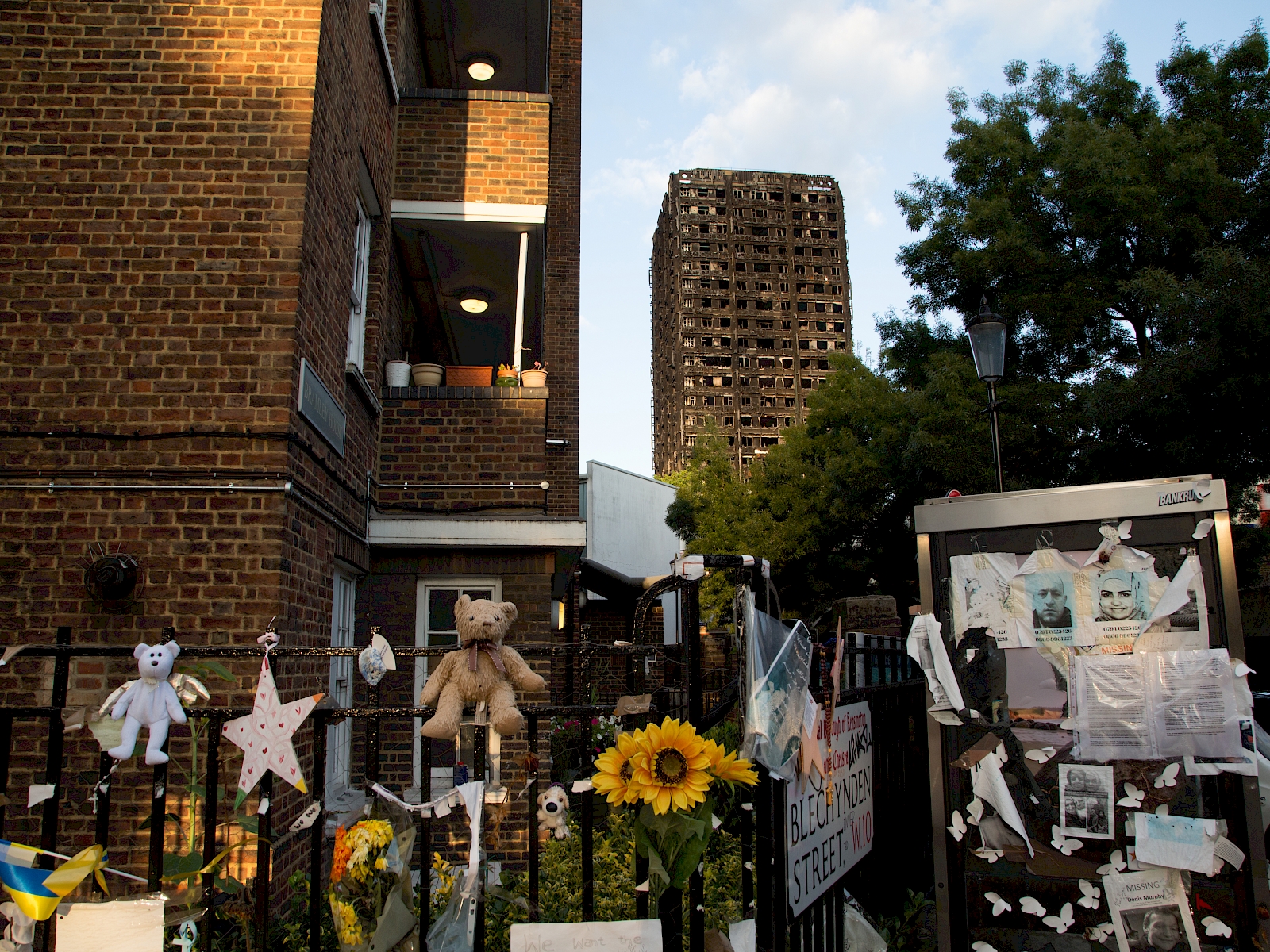OPINION: Sweeping reform is the only response to the shocking Grenfell Inquiry

Author: Andrew Beharrell, Senior Advisor
The astonishing testimony from the Grenfell Inquiry shows us just how much is wrong with our industry
The allegations and revelations emerging from the Grenfell Inquiry are deeply shocking. Up until now the inquiry has shone a spotlight on dysfunctional processes within our industry, which, in combination, led to the dreadful outcome at Grenfell. However, I never expected to read evidence of deliberate falsification of product information for commercial gain, with apparently cynical disregard to the safety of residents as has been alleged against insulation manufacturer Celotex.
This closely follows expert witness Paul Hyett stating that he was ‘somewhere between disappointed and appalled’ by the ambiguity in the Building Regulations Approved Documents. More recently, the inquiry has heard that a director at construction products firm Kingspan said, in emails, that consultants who raised concerns about the combustibility of its product could ‘go f*ck themselves’. What can we learn from these shocking revelations to enable our industry to make better and safer homes?
Make research, testing and certification independent
Designers and constructors rely on the expertise and impartiality of independent institutions to advise how to build safely. Originally set up by government, the Building Research Establishment (BRE), British Standards Institute (BSI) and British Board of Agrement (BBA) later became privatised organisations, required to be commercially self-supporting. They derive income in part from testing and certifying commercial products, and the Celotex allegations imply that BRE may have been too helpful in getting them over the line.
The Grenfell inquiry highlights the need for a genuinely independent body to research, test and certify construction elements and assemblies, not only to remove any suspicion of undue influence from commercial manufacturers, but to step back and examine more fundamental questions around how we should build. Instead of working out how to deliver a particular product or technique to the existing market, we need to ask how we can build better in the future.
Simplify construction detailing
In the past 30 years, construction detailing of houses and flats has become fiendishly complicated – in a saner world we simply would not start from here. The push to increase height and density of urban housing, coupled with stringent new technical standards, created a huge market for new products. Performance targets for thermal insulation, fire safety, acoustics, ventilation, daylight and other criteria often pull in different directions and require designers to reconcile conflicting single-topic guidance to arrive at compliant solutions. These solutions may work on paper and in the laboratory, but they also require accurate workmanship on site – just as we are also suffering a construction skills crisis.
The problem is compounded every time standards change. For example, the November 2018 change to Building Regulations, requiring the entire wall construction in buildings over 18m to be of limited combustibility, was a necessary quick reaction to Grenfell, but has introduced further complexity and uncertainties about the incombustibility of minor components within the wall system.
Complexity can lead to mistakes and failures. Most are not catastrophic as they were for Grenfell, but the gap between designed performance and actual performance appears to be widespread in the housing industry. This is especially so in the area of energy performance, and we now learn that a contributory factor in the Grenfell tragedy may be the manipulation of thermal tests for insulation as well as fire safety.
Specify complete building systems
Part of the solution lies in the development of complete building systems supplied by a single manufacturer. At present, the wall in a block of flats is made up of multiple components from different sources which have been tested separately or in very specific combinations. We are learning that these tests are sometimes carried out in highly theoretical laboratory conditions which do not reflect typical conditions on a building site. Change one aspect and the test results may be invalid. More reliable quality may lie, for example, with a single source of responsibility for the entire wall from outside to inside – provided of course the system has been rigorously and independently tested in real-life conditions. This approach is intrinsic to off-site manufacture, and it could become widespread for site-based operations also.
One implication of this is greater standardisation, and less experimentation and innovation on individual projects. Architects may find this uncomfortable. Unlike prestige projects in the commercial and cultural sectors, very few housing projects can afford proper R&D with full-sized mock-ups – but nor can they any longer afford the risks associated with untested solutions.
Take responsibility
Alongside the above changes, we need major reforms to procurement, woven through with the golden thread of responsibility for safety. The Celotex scandal also reinforces my view that the housing industry, and wider society, have become too attuned to assuming everything will be fine if we follow regulations and guidance – and too trusting of the wisdom and probity of the authors, whether they work for a statutory body or a product manufacturer. In future we need to be more challenging, more sceptical and independent-minded, taking more responsibility for our own decisions.
Read further comments from PTE in https://www.architectsjournal.co.uk/news/opinion/fire-safety-is-at-the-heart-of-the-architects-role
Published in the Architects' Journal - 4 December 2020






